A boy’s tutor retells his search for the boy for seven years after he is kidnapped by the Comanches in this historical novel set in the late 1700s. Arsène, the young son of the governor of French Louisiana, disappears in a blizzard on a trading trip in Comanche territory in 1789. For seven years, Jean-Pierre, the boy’s tutor and guardian at the time of his disappearance, searches for him on trading trips into comanchería. At last he finds him, only to discover that he has become a Comanche warrior now known as Amabate (The One Without A Head). Amabate returns to Fort St. Jean Baptiste de Natchitoches, Louisiana Territory, for a reunion with his father, but cannot be convinced to stay. “I am Comanche!” he exclaims.
Over the years, Amabate makes unannounced visits to his father’s home, sometimes with Comanche friends and relations, always painted and dressed as a warrior. Meanwhile, Amabate has joined a small band of “wolves,” braves who pledge never to back away from a battle as they roam the plains and ranges west into the mountains of New Mexico. Later he takes three wives and eventually he becomes White-Bear, a respected Comanche chieftain.
As an elderly man, Jean-Pierre tells the story of Arsène and his two worlds in a colorful combination of French, Comanche, Spanish, and English. He reflects on the verities of human relationships, his love for Arsène and for Arsène’s father, for the Comanche girl who was for a time Jean-Pierre’s wife, for his French wife, and for his Comanche “brothers.” Set in an authentic historical framework, the narrative explores the mores of two distinct cultures between the 1780s and the 1820s. We learn about the commerce of their days: stolen and traded ponies, war parties, battles with the Osage, love trysts, acts of bravery and revenge, prescient leaders, and prophetic dreams. The French Comanche is grounded in the dramatic sweep of history. The traders’ lives are affected by the French and Indian Wars, the American and French revolutions, Napoleon Bonaparte’s annexation of La Louisiane, and the Louisiana Purchase by the United States. The Comanches, ranging outside of “civilization,” are vulnerable to weather, illness, trade, enemy raids, and, as White-Bear foretells toward the end, the influx of American settlers.
Stanley T. Noyes grew up in California and was a writer, educator, and art’s administrator. During World War II, he served in the U.S. Army in the Ruhr campaign in a reconnaissance troop. They crossed the Rhine ahead of U.S. forces and later liberated slave labor camps. He was awarded the Bronze Star. When he returned he attended the University of California, Berkeley where he met and married fellow student Nancy Black in 1949 and earned his B.A. and M.A. degrees. For sport he rode bareback horses and bulls in rodeos in California and Nevada. Later Stan taught college at Cal extension and California College of the Arts. He lived in France with his family for about six years.
They moved to Santa Fe in 1964 and he taught at the College of Santa Fe, and briefly at the University of New Mexico. He later was a program director for the New Mexico Arts Division. Stan was a published author of poetry, fiction, and non-fiction, notably Los Comanches, The Horse People, 1751–1845, a history of the Comanche Indians now from Sunstone Press in a new edition. Noyes was an avid hiker in the mountains of New Mexico often accompanied by his wolf hybrids. He spent many summers hiking the Pyrenees with his family and close French and Spanish friends.
Secure Movie & TV Rights
Hardcover:
7 x 10
ISBN: 978-1-63293-506-9
298 pp.,$42.95
Softcover:
7 x 10
ISBN: 978-1-63293-257-0
298 pp.,$28.95
eBook:
ISBN: 978-1-61139-572-3
298 pp.,$4.99
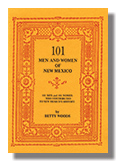 101 MEN AND WOMEN OF NEW MEXICO
101 MEN AND WOMEN OF NEW MEXICO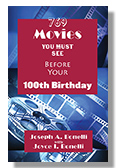 769 MOVIES YOU MUST SEE BEFORE YOUR 100TH BIRTHDAY
769 MOVIES YOU MUST SEE BEFORE YOUR 100TH BIRTHDAY ADAM'S HEART
ADAM'S HEART ADOBE HOUSES FOR TODAY
ADOBE HOUSES FOR TODAY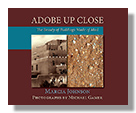 ADOBE UP CLOSE
ADOBE UP CLOSE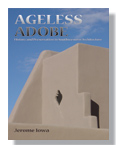 AGELESS ADOBE
AGELESS ADOBE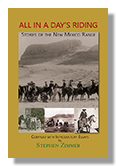 ALL IN A DAY’S RIDING
ALL IN A DAY’S RIDING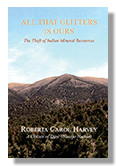 ALL THAT GLITTERS IS OURS
ALL THAT GLITTERS IS OURS AMERICAN INDIANS AS DEPICTED ON SONG SHEET COVERS SINCE 1833
AMERICAN INDIANS AS DEPICTED ON SONG SHEET COVERS SINCE 1833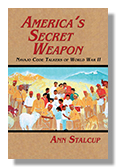 AMERICA’S SECRET WEAPON
AMERICA’S SECRET WEAPON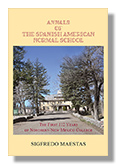 ANNALS OF THE SPANISH AMERICAN NORMAL SCHOOL
ANNALS OF THE SPANISH AMERICAN NORMAL SCHOOL ANNA’S 1918 HOME FRONT DIARY
ANNA’S 1918 HOME FRONT DIARY ARCHITECTURE AND CHILDREN, GUIDE FOR TEACHERS, NEW EDITION
ARCHITECTURE AND CHILDREN, GUIDE FOR TEACHERS, NEW EDITION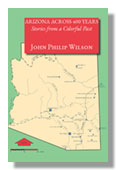 ARIZONA ACROSS 400 YEARS
ARIZONA ACROSS 400 YEARS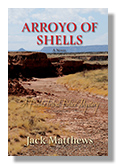 ARROYO OF SHELLS
ARROYO OF SHELLS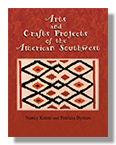 ARTS AND CRAFTS PROJECTS OF THE AMERICAN SOUTHWEST
ARTS AND CRAFTS PROJECTS OF THE AMERICAN SOUTHWEST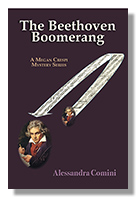 THE BEETHOVEN BOOMERANG
THE BEETHOVEN BOOMERANG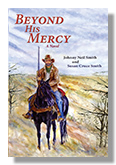 BEYOND HIS MERCY
BEYOND HIS MERCY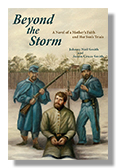 BEYOND THE STORM
BEYOND THE STORM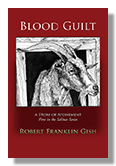 BLOOD GUILT
BLOOD GUILT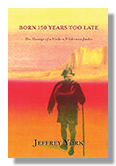 BORN 150 YEARS TOO LATE
BORN 150 YEARS TOO LATE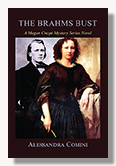 THE BRAHMS BUST
THE BRAHMS BUST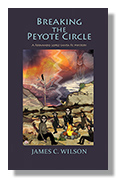 BREAKING THE PEYOTE CIRCLE
BREAKING THE PEYOTE CIRCLE A BRIEF COLORADO INDIAN HISTORY OF THE 1800S
A BRIEF COLORADO INDIAN HISTORY OF THE 1800S A BROTHER'S PEACE
A BROTHER'S PEACE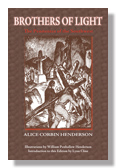 BROTHERS OF LIGHT
BROTHERS OF LIGHT BUDDHIST WISDOM FOR BEGINNERS
BUDDHIST WISDOM FOR BEGINNERS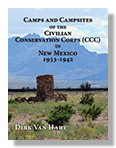 CAMPS AND CAMPSITES OF THE CIVILIAN CONSERVATION CORPS (CCC) IN NEW MEXICO 1933–1942
CAMPS AND CAMPSITES OF THE CIVILIAN CONSERVATION CORPS (CCC) IN NEW MEXICO 1933–1942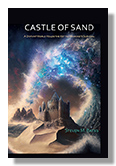 CASTLE OF SAND
CASTLE OF SAND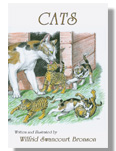 CATS
CATS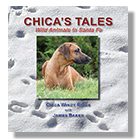 CHICA'S TALES
CHICA'S TALES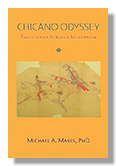 CHICANO ODYSSEY
CHICANO ODYSSEY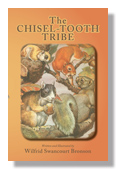 THE CHISEL-TOOTH TRIBE
THE CHISEL-TOOTH TRIBE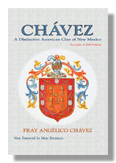 CHÁVEZ
CHÁVEZ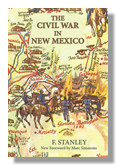 THE CIVIL WAR IN NEW MEXICO
THE CIVIL WAR IN NEW MEXICO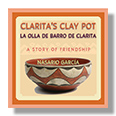 CLARITA’S CLAY POT, LA OLLA DE BARRO DE CLARITA
CLARITA’S CLAY POT, LA OLLA DE BARRO DE CLARITA COLORADO AMERICAN INDIAN CIVICS
COLORADO AMERICAN INDIAN CIVICS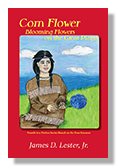 CORN FLOWER, BLOOMING FLOWERS ON THE GREAT PLAINS
CORN FLOWER, BLOOMING FLOWERS ON THE GREAT PLAINS THE CORONA YEAR DIARY OF SIGURD BERGMAN, MD
THE CORONA YEAR DIARY OF SIGURD BERGMAN, MD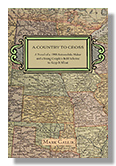 A COUNTRY TO CROSS
A COUNTRY TO CROSS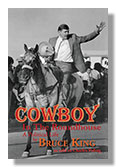 COWBOY IN THE ROUNDHOUSE
COWBOY IN THE ROUNDHOUSE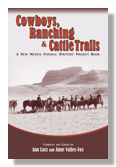 COWBOYS, RANCHING & CATTLE TRAILS
COWBOYS, RANCHING & CATTLE TRAILS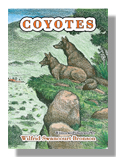 COYOTES
COYOTES CREATE A YOGA PRACTICE FOR KIDS
CREATE A YOGA PRACTICE FOR KIDS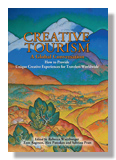 CREATIVE TOURISM, A GLOBAL CONVERSATION
CREATIVE TOURISM, A GLOBAL CONVERSATION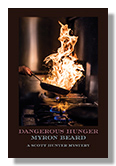 DANGEROUS HUNGER
DANGEROUS HUNGER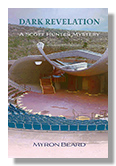 DARK REVELATION
DARK REVELATION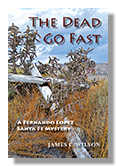 THE DEAD GO FAST
THE DEAD GO FAST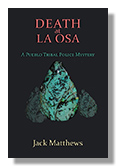 DEATH AT LA OSA
DEATH AT LA OSA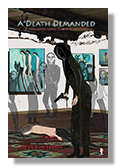 A DEATH DEMANDED
A DEATH DEMANDED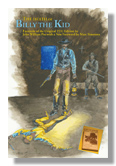 THE DEATH OF BILLY THE KID
THE DEATH OF BILLY THE KID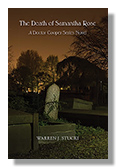 THE DEATH OF SAMANTHA ROSE
THE DEATH OF SAMANTHA ROSE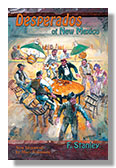 DESPERADOS OF NEW MEXICO
DESPERADOS OF NEW MEXICO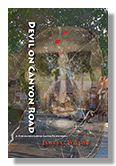 DEVIL ON CANYON ROAD
DEVIL ON CANYON ROAD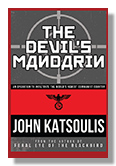 THE DEVIL’S MANDARIN
THE DEVIL’S MANDARIN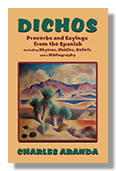 DICHOS
DICHOS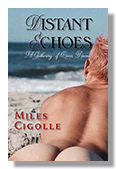 DISTANT ECHOES
DISTANT ECHOES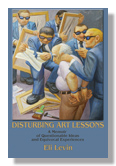 DISTURBING ART LESSONS
DISTURBING ART LESSONS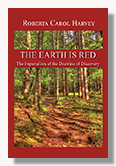 THE EARTH IS RED
THE EARTH IS RED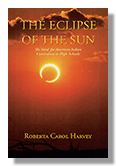 THE ECLIPSE OF THE SUN
THE ECLIPSE OF THE SUN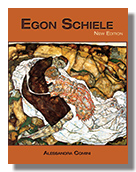 EGON SCHIELE
EGON SCHIELE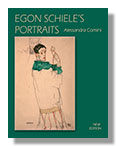 EGON SCHIELE'S PORTRAITS
EGON SCHIELE'S PORTRAITS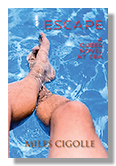 ESCAPE
ESCAPE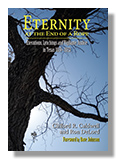 ETERNITY AT THE END OF A ROPE
ETERNITY AT THE END OF A ROPE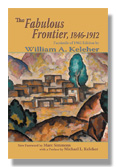 THE FABULOUS FRONTIER, 1846-1912
THE FABULOUS FRONTIER, 1846-1912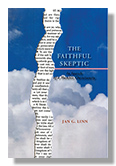 THE FAITHFUL SKEPTIC
THE FAITHFUL SKEPTIC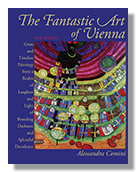 THE FANTASTIC ART OF VIENNA
THE FANTASTIC ART OF VIENNA FERAL EYE OF THE BLACKBIRD
FERAL EYE OF THE BLACKBIRD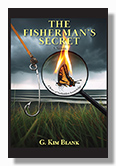 THE FISHERMAN'S SECRET
THE FISHERMAN'S SECRET FIVE GUYS IN A BEETLE
FIVE GUYS IN A BEETLE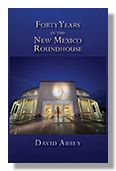 FORTY YEARS IN THE NEW MEXICO ROUNDHOUSE
FORTY YEARS IN THE NEW MEXICO ROUNDHOUSE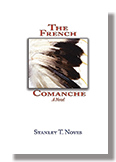 THE FRENCH COMANCHE
THE FRENCH COMANCHE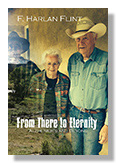 FROM THERE TO ETERNITY, ALZHEIMER’S AND BEYOND
FROM THERE TO ETERNITY, ALZHEIMER’S AND BEYOND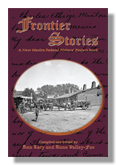 FRONTIER STORIES
FRONTIER STORIES GENDERQUEER
GENDERQUEER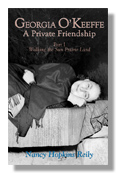 GEORGIA O'KEEFFE, A PRIVATE FRIENDSHIP, PART I
GEORGIA O'KEEFFE, A PRIVATE FRIENDSHIP, PART I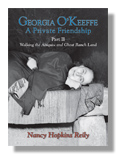 GEORGIA O'KEEFFE, A PRIVATE FRIENDSHIP, PART II
GEORGIA O'KEEFFE, A PRIVATE FRIENDSHIP, PART II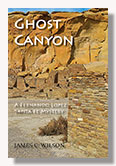 GHOST CANYON
GHOST CANYON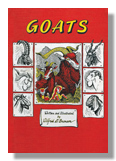 GOATS
GOATS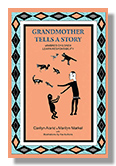 GRANDMOTHER TELLS A STORY
GRANDMOTHER TELLS A STORY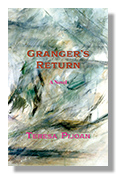 GRANGER'S RETURN
GRANGER'S RETURN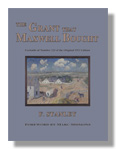 THE GRANT THAT MAXWELL BOUGHT
THE GRANT THAT MAXWELL BOUGHT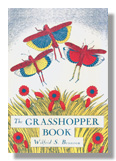 THE GRASSHOPPER BOOK
THE GRASSHOPPER BOOK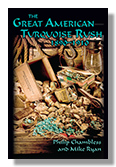 THE GREAT AMERICAN TURQUOISE RUSH: 1890–1910
THE GREAT AMERICAN TURQUOISE RUSH: 1890–1910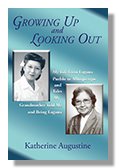 GROWING UP AND LOOKING OUT
GROWING UP AND LOOKING OUT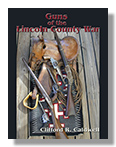 GUNS OF THE LINCOLN COUNTY WAR
GUNS OF THE LINCOLN COUNTY WAR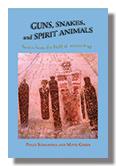 GUNS, SNAKES, AND SPIRIT ANIMALS
GUNS, SNAKES, AND SPIRIT ANIMALS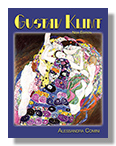 GUSTAV KLIMT
GUSTAV KLIMT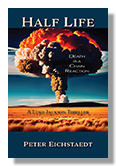 HALF LIFE
HALF LIFE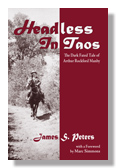 HEADLESS IN TAOS
HEADLESS IN TAOS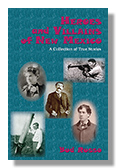 HEROES AND VILLAINS OF NEW MEXICO
HEROES AND VILLAINS OF NEW MEXICO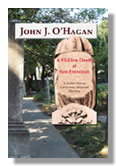 A HIDDEN DEATH AT SAN FRANCISCO
A HIDDEN DEATH AT SAN FRANCISCO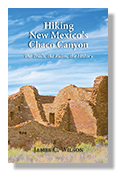 HIKING NEW MEXICO’S CHACO CANYON
HIKING NEW MEXICO’S CHACO CANYON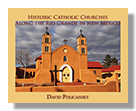 HISTORIC CATHOLIC CHURCHES ALONG THE RIO GRANDE IN NEW MEXICO
HISTORIC CATHOLIC CHURCHES ALONG THE RIO GRANDE IN NEW MEXICO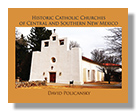 HISTORIC CATHOLIC CHURCHES OF CENTRAL AND SOUTHERN NEW MEXICO
HISTORIC CATHOLIC CHURCHES OF CENTRAL AND SOUTHERN NEW MEXICO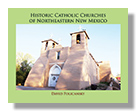 HISTORIC CATHOLIC CHURCHES OF NORTHEASTERN NEW MEXICO
HISTORIC CATHOLIC CHURCHES OF NORTHEASTERN NEW MEXICO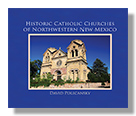 HISTORIC CATHOLIC CHURCHES OF NORTHWESTERN NEW MEXICO
HISTORIC CATHOLIC CHURCHES OF NORTHWESTERN NEW MEXICO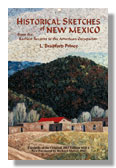 HISTORICAL SKETCHES OF NEW MEXICO
HISTORICAL SKETCHES OF NEW MEXICO HOMOPHONES
HOMOPHONES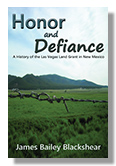 HONOR AND DEFIANCE
HONOR AND DEFIANCE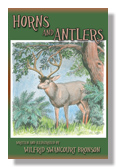 HORNS AND ANTLERS
HORNS AND ANTLERS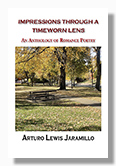 IMPRESSIONS THROUGH A TIMEWORN LENS
IMPRESSIONS THROUGH A TIMEWORN LENS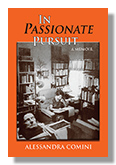 IN PASSIONATE PURSUIT
IN PASSIONATE PURSUIT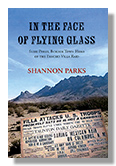 IN THE FACE OF FLYING GLASS
IN THE FACE OF FLYING GLASS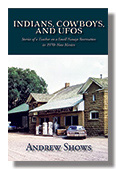 INDIANS, COWBOYS, AND UFOS
INDIANS, COWBOYS, AND UFOS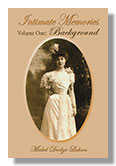 INTIMATE MEMORIES, VOLUME ONE
INTIMATE MEMORIES, VOLUME ONE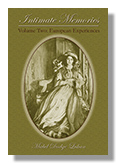 INTIMATE MEMORIES, VOLUME TWO
INTIMATE MEMORIES, VOLUME TWO THE IRISH SINGER
THE IRISH SINGER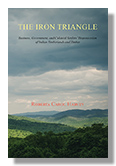 THE IRON TRIANGLE
THE IRON TRIANGLE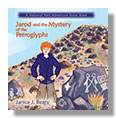 JAROD AND THE MYSTERY OF THE PETROGLYPHS
JAROD AND THE MYSTERY OF THE PETROGLYPHS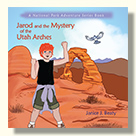 JAROD AND THE MYSTERY OF THE UTAH ARCHES
JAROD AND THE MYSTERY OF THE UTAH ARCHES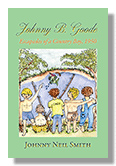 JOHNNY B. GOODE
JOHNNY B. GOODE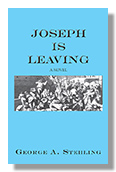 JOSEPH IS LEAVING
JOSEPH IS LEAVING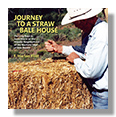 JOURNEY TO A STRAW BALE HOUSE
JOURNEY TO A STRAW BALE HOUSE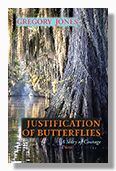 JUSTIFICATION OF BUTTERFLIES
JUSTIFICATION OF BUTTERFLIES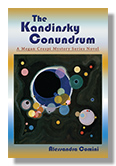 THE KANDINSKY CONUNDRUM
THE KANDINSKY CONUNDRUM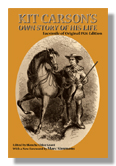 KIT CARSON'S OWN STORY OF HIS LIFE
KIT CARSON'S OWN STORY OF HIS LIFE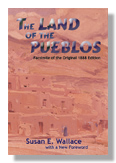 THE LAND OF THE PUEBLOS
THE LAND OF THE PUEBLOS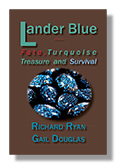 LANDER BLUE
LANDER BLUE THE LAS PUERTAS TALES, LOS CUENTOS DE LAS PUERTAS
THE LAS PUERTAS TALES, LOS CUENTOS DE LAS PUERTAS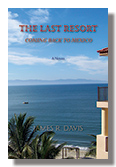 THE LAST RESORT
THE LAST RESORT LAYERS OF TRUTH
LAYERS OF TRUTH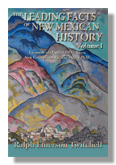 THE LEADING FACTS OF NEW MEXICAN HISTORY, VOL I
THE LEADING FACTS OF NEW MEXICAN HISTORY, VOL I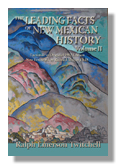 THE LEADING FACTS OF NEW MEXICAN HISTORY, VOL. II
THE LEADING FACTS OF NEW MEXICAN HISTORY, VOL. II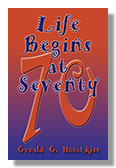 LIFE BEGINS AT SEVENTY
LIFE BEGINS AT SEVENTY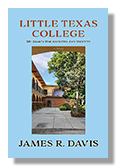 LITTLE TEXAS COLLEGE
LITTLE TEXAS COLLEGE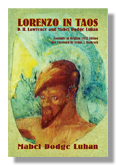 LORENZO IN TAOS
LORENZO IN TAOS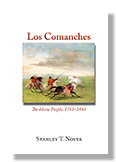 LOS COMANCHES
LOS COMANCHES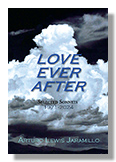 LOVE EVER AFTER
LOVE EVER AFTER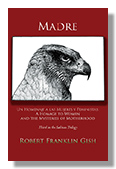 MADRE, Third in the Salinas Trilogy
MADRE, Third in the Salinas Trilogy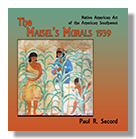 THE MAISEL'S MURALS, 1939
THE MAISEL'S MURALS, 1939 A MAN CALLED JESUS
A MAN CALLED JESUS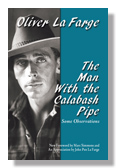 THE MAN WITH THE CALABASH PIPE
THE MAN WITH THE CALABASH PIPE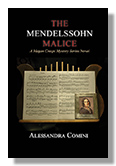 THE MENDELSSOHN MALICE
THE MENDELSSOHN MALICE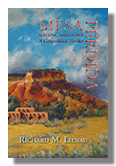 MESA PERDIDA, MISSING MILLIONS
MESA PERDIDA, MISSING MILLIONS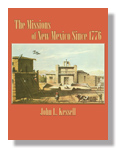 THE MISSIONS OF NEW MEXICO Since 1776
THE MISSIONS OF NEW MEXICO Since 1776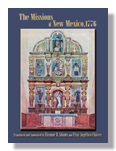 THE MISSIONS OF NEW MEXICO, 1776
THE MISSIONS OF NEW MEXICO, 1776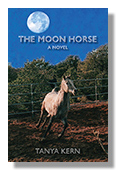 THE MOON HORSE
THE MOON HORSE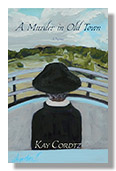 A MURDER IN OLD TOWN
A MURDER IN OLD TOWN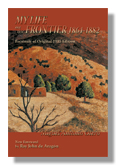 MY LIFE ON THE FRONTIER, 1864-1882
MY LIFE ON THE FRONTIER, 1864-1882 MY LIFE ON THE FRONTIER, 1882-1897
MY LIFE ON THE FRONTIER, 1882-1897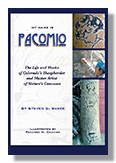 MY NAME IS PACOMIO
MY NAME IS PACOMIO MY NINE YEARS AS GOVERNOR OF THE TERRITORY OF NEW MEXICO, 1897-1906
MY NINE YEARS AS GOVERNOR OF THE TERRITORY OF NEW MEXICO, 1897-1906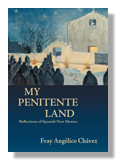 MY PENITENTE LAND
MY PENITENTE LAND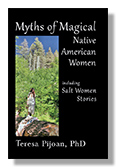 MYTHS OF MAGICAL NATIVE AMERICAN WOMEN INCLUDING SALT WOMAN STORIES
MYTHS OF MAGICAL NATIVE AMERICAN WOMEN INCLUDING SALT WOMAN STORIES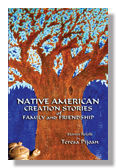 NATIVE AMERICAN CREATION STORIES OF FAMILY AND FRIENDSHIP
NATIVE AMERICAN CREATION STORIES OF FAMILY AND FRIENDSHIP NATIVE GENIUS
NATIVE GENIUS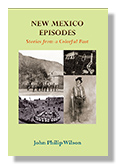 NEW MEXICO EPISODES
NEW MEXICO EPISODES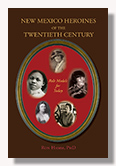 NEW MEXICO HEROINES OF THE TWENTIETH CENTURY, ROLE MODELS FOR TODAY
NEW MEXICO HEROINES OF THE TWENTIETH CENTURY, ROLE MODELS FOR TODAY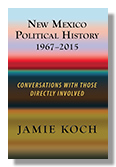 NEW MEXICO POLITICAL HISTORY, 1967–2015
NEW MEXICO POLITICAL HISTORY, 1967–2015 NEW MEXICO STORIES
NEW MEXICO STORIES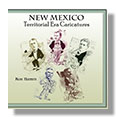 NEW MEXICO TERRITORIAL ERA CARICATURES
NEW MEXICO TERRITORIAL ERA CARICATURES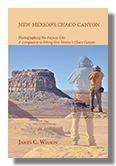 NEW MEXICO'S CHACO CANYON, PHOTOGRAPHING THE ANCIENT CITY
NEW MEXICO'S CHACO CANYON, PHOTOGRAPHING THE ANCIENT CITY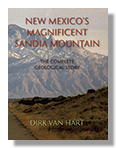 NEW MEXICO'S MAGNIFICENT SANDIA MOUNTAIN
NEW MEXICO'S MAGNIFICENT SANDIA MOUNTAIN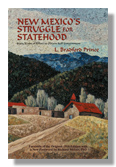 NEW MEXICO'S STRUGGLE FOR STATEHOOD
NEW MEXICO'S STRUGGLE FOR STATEHOOD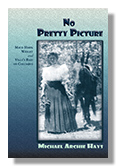 NO PRETTY PICTURE
NO PRETTY PICTURE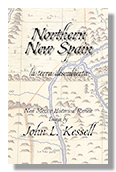 NORTHERN NEW SPAIN
NORTHERN NEW SPAIN NOURISHING THE BODY AND RECOVERING HEALTH
NOURISHING THE BODY AND RECOVERING HEALTH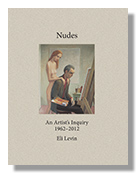 NUDES
NUDES OLYMPIC LIFTING
OLYMPIC LIFTING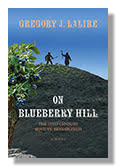 ON BLUEBERRY HILL, A NOVEL
ON BLUEBERRY HILL, A NOVEL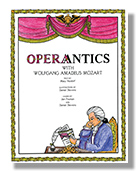 OPERANTICS WITH WOLFGANG AMADEUS MOZART
OPERANTICS WITH WOLFGANG AMADEUS MOZART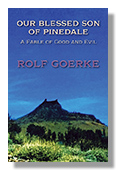 OUR BLESSED SON OF PINEDALE
OUR BLESSED SON OF PINEDALE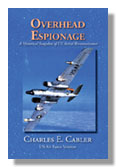 OVERHEAD ESPIONAGE
OVERHEAD ESPIONAGE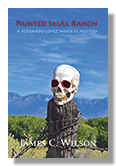 PAINTED SKULL RANCH
PAINTED SKULL RANCH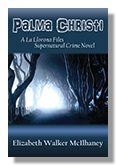 PALMA CHRISTI
PALMA CHRISTI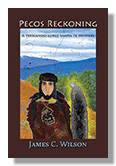 PECOS RECKONING
PECOS RECKONING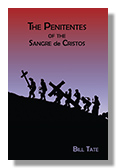 THE PENITENTES OF THE SANGRE DE CRISTOS
THE PENITENTES OF THE SANGRE DE CRISTOS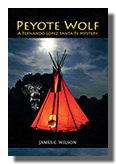 PEYOTE WOLF
PEYOTE WOLF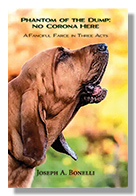 PHANTOM OF THE DUMP
PHANTOM OF THE DUMP THE PIANO OWNER'S HOME COMPANION
THE PIANO OWNER'S HOME COMPANION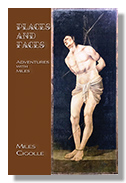 PLACES AND FACES
PLACES AND FACES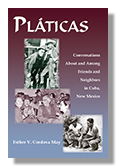 PLÁTICAS
PLÁTICAS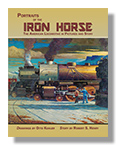 PORTRAITS OF THE IRON HORSE
PORTRAITS OF THE IRON HORSE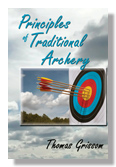 PRINCIPLES OF TRADITIONAL ARCHERY
PRINCIPLES OF TRADITIONAL ARCHERY A PRIVATE AND HER FOES
A PRIVATE AND HER FOES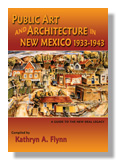 PUBLIC ART AND ARCHITECTURE IN NEW MEXICO, 1933-1943
PUBLIC ART AND ARCHITECTURE IN NEW MEXICO, 1933-1943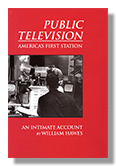 PUBLIC TELEVISION: AMERICA'S FIRST STATION
PUBLIC TELEVISION: AMERICA'S FIRST STATION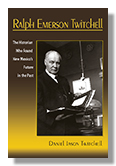 RALPH EMERSON TWITCHELL
RALPH EMERSON TWITCHELL RANCH WITHOUT COWBOYS
RANCH WITHOUT COWBOYS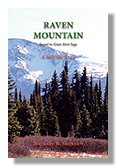 RAVEN MOUNTAIN, A MYTHIC TALE
RAVEN MOUNTAIN, A MYTHIC TALE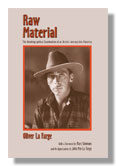 RAW MATERIAL
RAW MATERIAL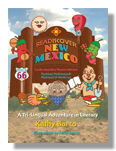 READiscover NEW MEXICO
READiscover NEW MEXICO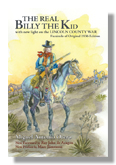 THE REAL BILLY THE KID
THE REAL BILLY THE KID RECKONING
RECKONING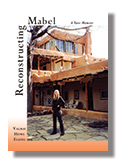 RECONSTRUCTING MABEL
RECONSTRUCTING MABEL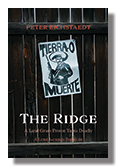 THE RIDGE, A LAND GRANT PROTEST TURNS DEADLY
THE RIDGE, A LAND GRANT PROTEST TURNS DEADLY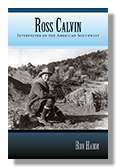 ROSS CALVIN
ROSS CALVIN ROUTE 66 NEW MEXICO A VISUAL TOUR
ROUTE 66 NEW MEXICO A VISUAL TOUR A SACRED PLACE IN THE ENCHANTED LAND
A SACRED PLACE IN THE ENCHANTED LAND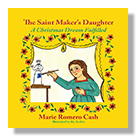 THE SAINT MAKER’S DAUGHTER
THE SAINT MAKER’S DAUGHTER SANTA FE ASSASSIN
SANTA FE ASSASSIN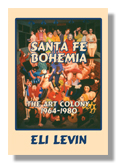 SANTA FE BOHEMIA
SANTA FE BOHEMIA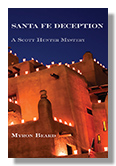 SANTA FE DECEPTION
SANTA FE DECEPTION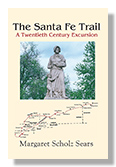 THE SANTA FE TRAIL
THE SANTA FE TRAIL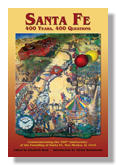 SANTA FE, 400 YEARS, 400 QUESTIONS
SANTA FE, 400 YEARS, 400 QUESTIONS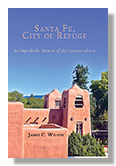 SANTA FE, CITY OF REFUGE
SANTA FE, CITY OF REFUGE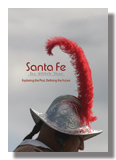 SANTA FE, ITS 400TH YEAR
SANTA FE, ITS 400TH YEAR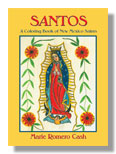 SANTOS
SANTOS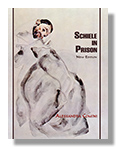 SCHIELE IN PRISON
SCHIELE IN PRISON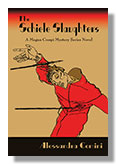 THE SCHIELE SLAUGHTERS
THE SCHIELE SLAUGHTERS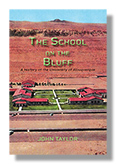 THE SCHOOL ON THE BLUFF
THE SCHOOL ON THE BLUFF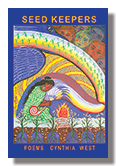 SEED KEEPERS
SEED KEEPERS SEEING THE ELEPHANT
SEEING THE ELEPHANT SEOTSE, A VISIONARY TALE
SEOTSE, A VISIONARY TALE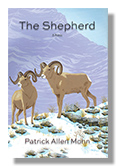 THE SHEPHERD
THE SHEPHERD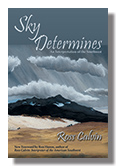 SKY DETERMINES
SKY DETERMINES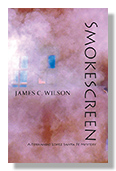 SMOKESCREEN
SMOKESCREEN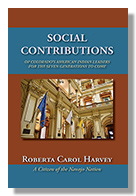 SOCIAL CONTRIBUTIONS OF COLORADO'S INDIAN LEADERS
SOCIAL CONTRIBUTIONS OF COLORADO'S INDIAN LEADERS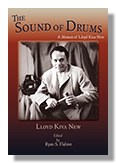 THE SOUND OF DRUMS
THE SOUND OF DRUMS SOUTHWESTERN COLONIAL IRONWORK
SOUTHWESTERN COLONIAL IRONWORK SPANISH AMERICAN MUSIC IN NEW MEXICO, THE WPA ERA
SPANISH AMERICAN MUSIC IN NEW MEXICO, THE WPA ERA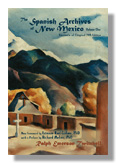 THE SPANISH ARCHIVES OF NEW MEXICO, VOLUME ONE
THE SPANISH ARCHIVES OF NEW MEXICO, VOLUME ONE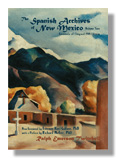 THE SPANISH ARCHIVES OF NEW MEXICO, VOLUME TWO
THE SPANISH ARCHIVES OF NEW MEXICO, VOLUME TWO SPANISH COLONIAL FURNITURE
SPANISH COLONIAL FURNITURE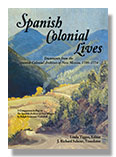 SPANISH COLONIAL LIVES
SPANISH COLONIAL LIVES SPANISH COLONIAL WOMEN AND THE LAW: COMPLAINTS, LAWSUITS, AND CRIMINAL BEHAVIOR
SPANISH COLONIAL WOMEN AND THE LAW: COMPLAINTS, LAWSUITS, AND CRIMINAL BEHAVIOR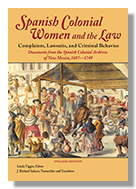 SPANISH COLONIAL WOMEN AND THE LAW: COMPLAINTS, LAWSUITS, AND CRIMINAL BEHAVIOR (ENGLISH EDITION)
SPANISH COLONIAL WOMEN AND THE LAW: COMPLAINTS, LAWSUITS, AND CRIMINAL BEHAVIOR (ENGLISH EDITION) STEALING THE HOPI SNAKE DANCE
STEALING THE HOPI SNAKE DANCE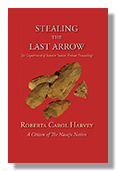 STEALING THE LAST ARROW
STEALING THE LAST ARROW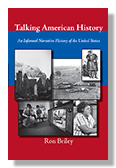 TALKING AMERICAN HISTORY
TALKING AMERICAN HISTORY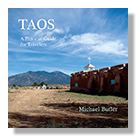 TAOS
TAOS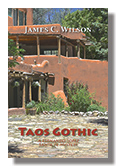 TAOS GOTHIC
TAOS GOTHIC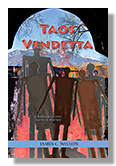 TAOS VENDETTA
TAOS VENDETTA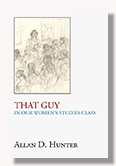 THAT GUY IN OUR WOMEN’S STUDIES CLASS
THAT GUY IN OUR WOMEN’S STUDIES CLASS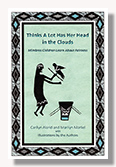 THINKS A LOT HAS HER HEAD IN THE CLOUDS
THINKS A LOT HAS HER HEAD IN THE CLOUDS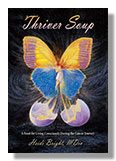 THRIVER SOUP
THRIVER SOUP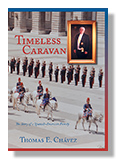 TIMELESS CARAVAN
TIMELESS CARAVAN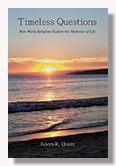 TIMELESS QUESTIONS
TIMELESS QUESTIONS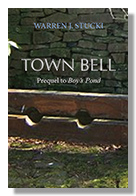 TOWN BELL
TOWN BELL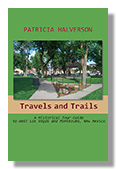 TRAVELS AND TRAILS
TRAVELS AND TRAILS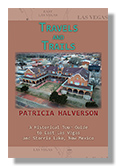 TRAVELS AND TRAILS
TRAVELS AND TRAILS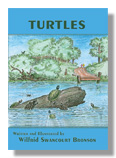 TURTLES
TURTLES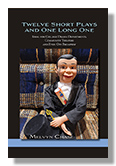 TWELVE SHORT PLAYS AND ONE LONG ONE
TWELVE SHORT PLAYS AND ONE LONG ONE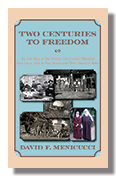 TWO CENTURIES TO FREEDOM
TWO CENTURIES TO FREEDOM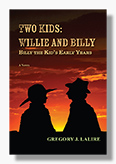 TWO KIDS: WILLIE AND BILLY
TWO KIDS: WILLIE AND BILLY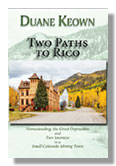 TWO PATHS TO RICO
TWO PATHS TO RICO UPON ARRIVAL, A FICTIONALIZED MEMOIR IN DIARY FORM
UPON ARRIVAL, A FICTIONALIZED MEMOIR IN DIARY FORM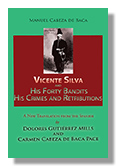 VICENTE SILVA AND HIS FORTY BANDITS, HIS CRIMES AND RETRIBUTIONS
VICENTE SILVA AND HIS FORTY BANDITS, HIS CRIMES AND RETRIBUTIONS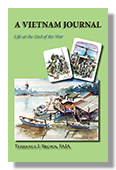 A VIETNAM JOURNAL
A VIETNAM JOURNAL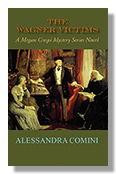 THE WAGNER VICTIMS
THE WAGNER VICTIMS WAIT UNTIL YOU'RE FIFTY
WAIT UNTIL YOU'RE FIFTY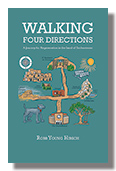 WALKING FOUR DIRECTIONS
WALKING FOUR DIRECTIONS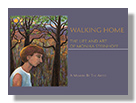 WALKING HOME
WALKING HOME WARRIOR SOCIETIES
WARRIOR SOCIETIES THE WATCHERS’ CLUB
THE WATCHERS’ CLUB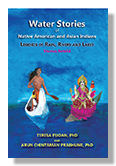 WATER STORIES OF NATIVE AMERICAN AND ASIAN INDIANS
WATER STORIES OF NATIVE AMERICAN AND ASIAN INDIANS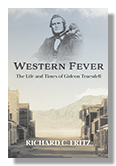 WESTERN FEVER
WESTERN FEVER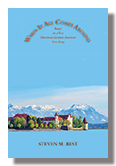 WHEN IT ALL COMES AROUND
WHEN IT ALL COMES AROUND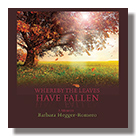 WHEREBY THE LEAVES HAVE FALLEN
WHEREBY THE LEAVES HAVE FALLEN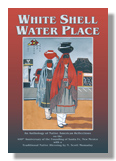 WHITE SHELL WATER PLACE
WHITE SHELL WATER PLACE WHY I HATE MODERN ART
WHY I HATE MODERN ART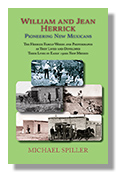 WILLIAM AND JEAN HERRICK
WILLIAM AND JEAN HERRICK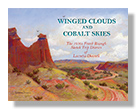 WINGED CLOUDS AND COBALT SKIES
WINGED CLOUDS AND COBALT SKIES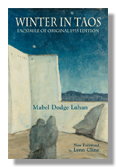 WINTER IN TAOS
WINTER IN TAOS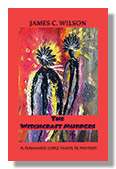 THE WITCHCRAFT MURDERS
THE WITCHCRAFT MURDERS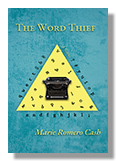 THE WORD THIEF
THE WORD THIEF YOGA FOR KIDS TO TEENS
YOGA FOR KIDS TO TEENS